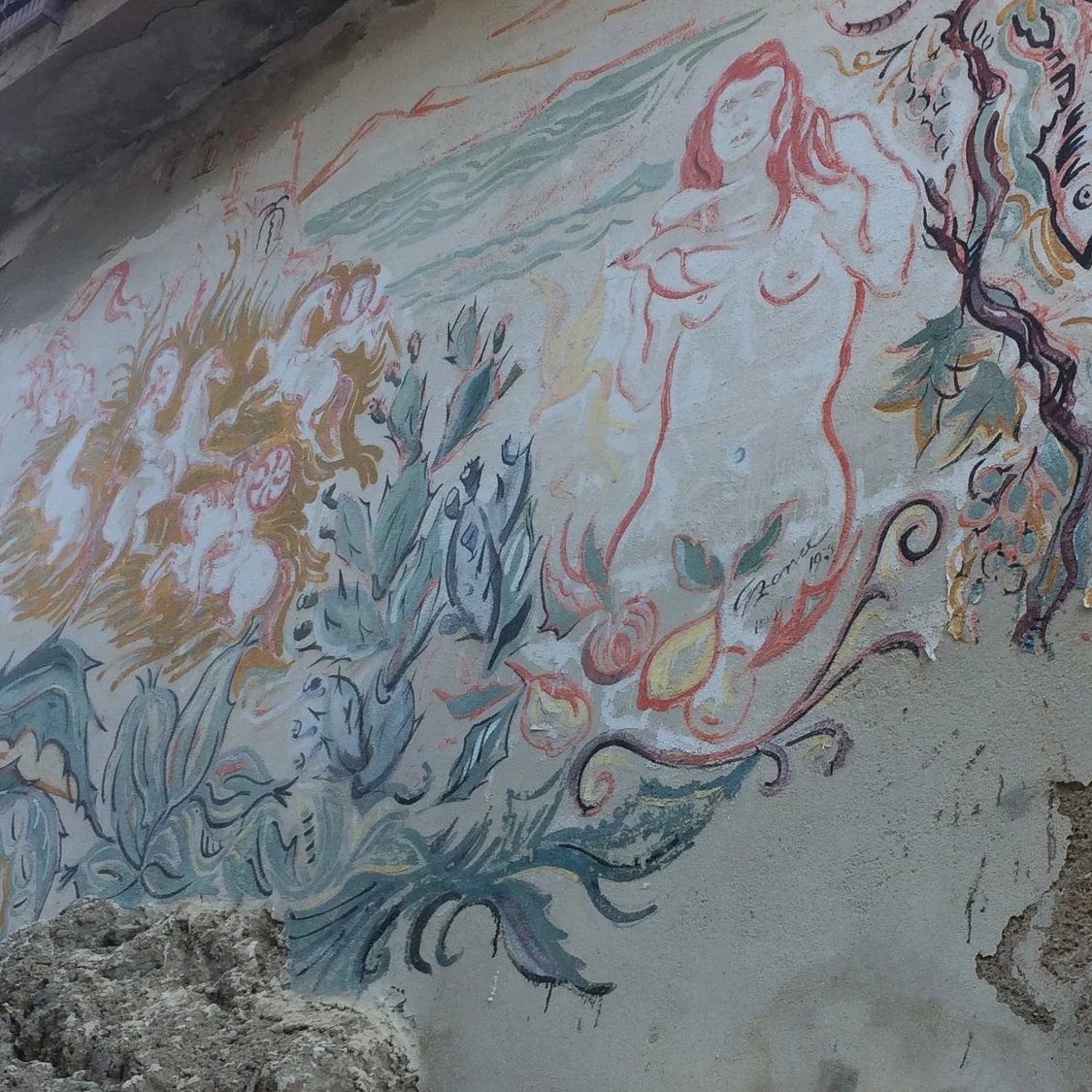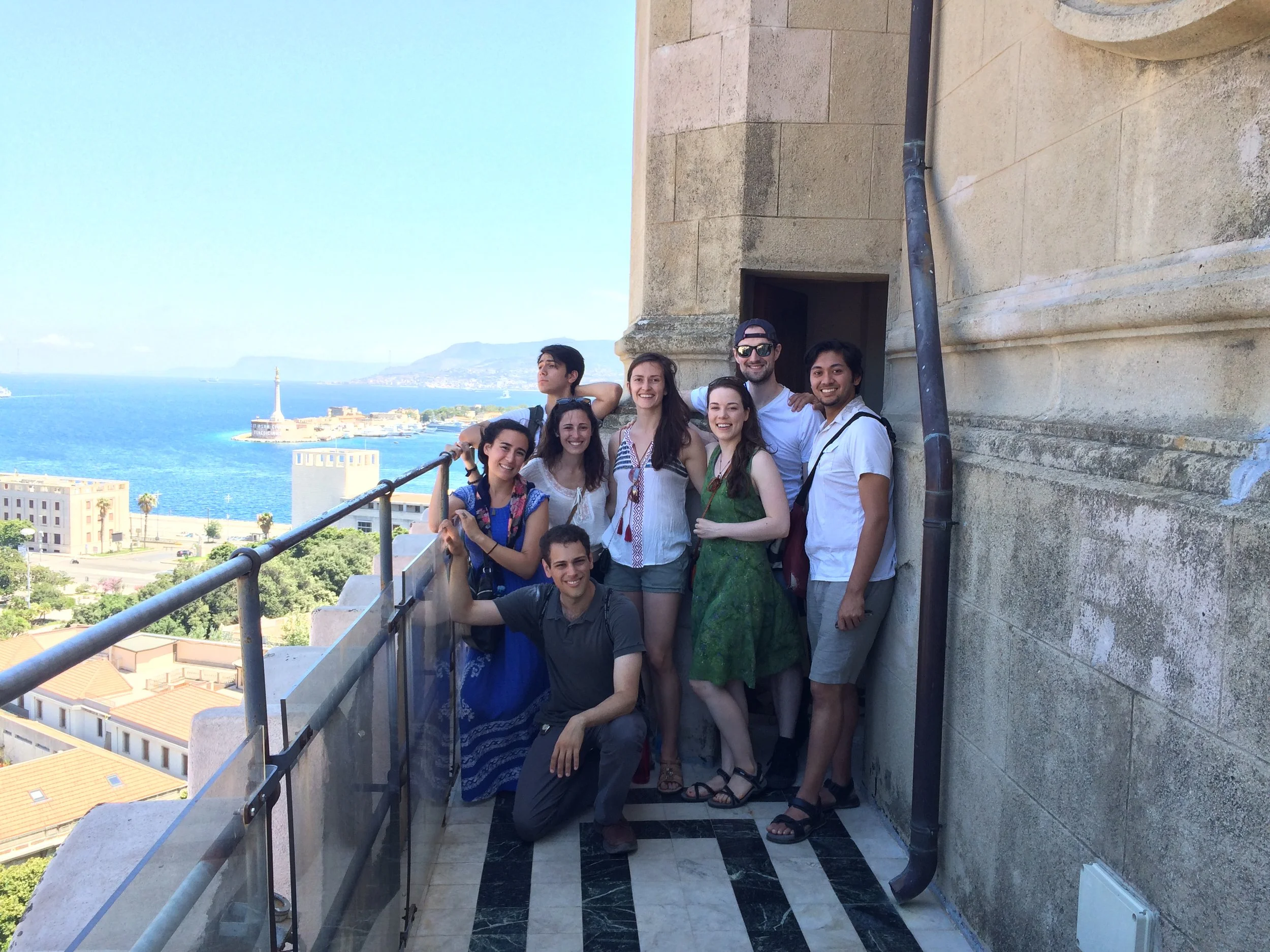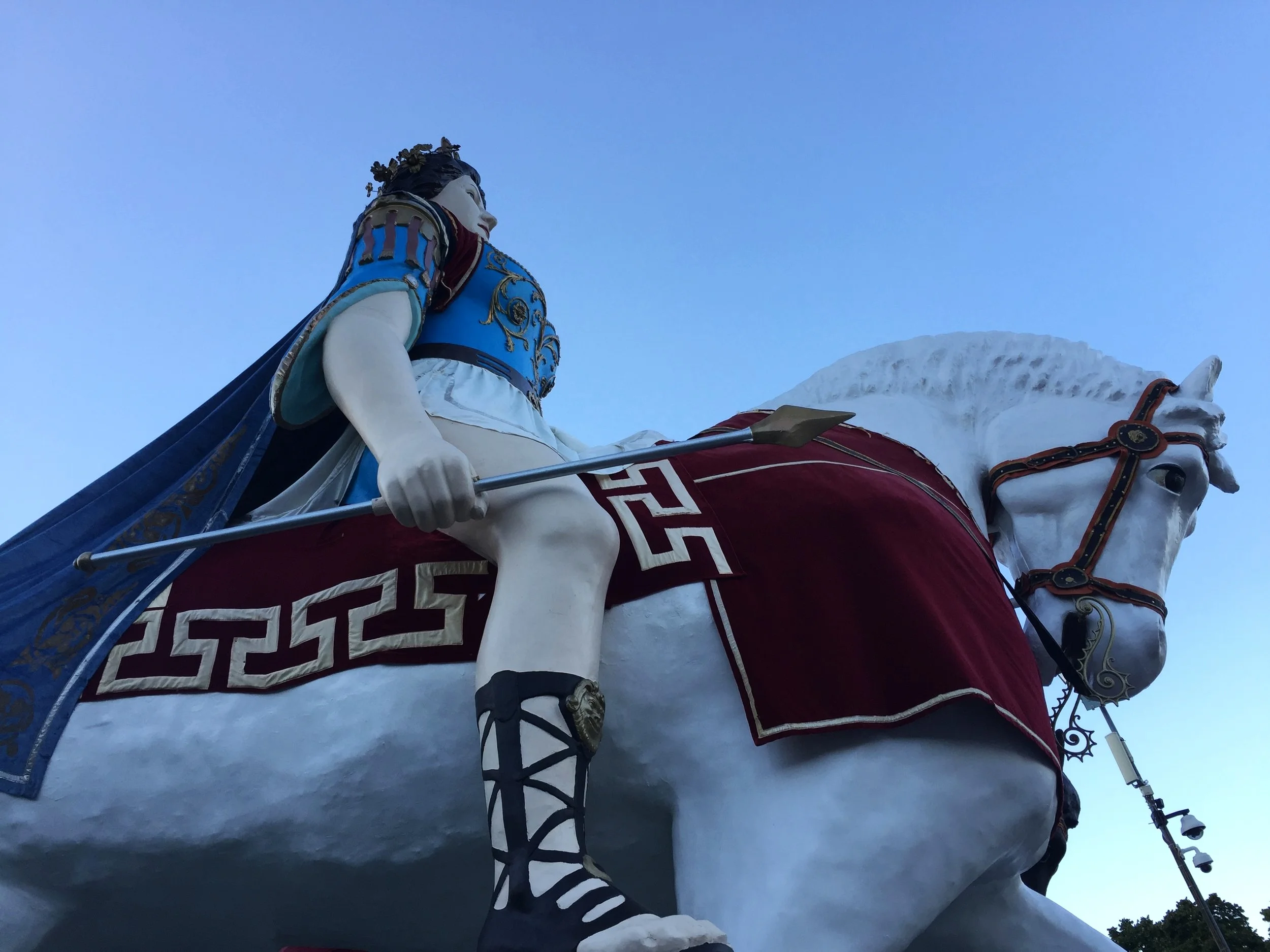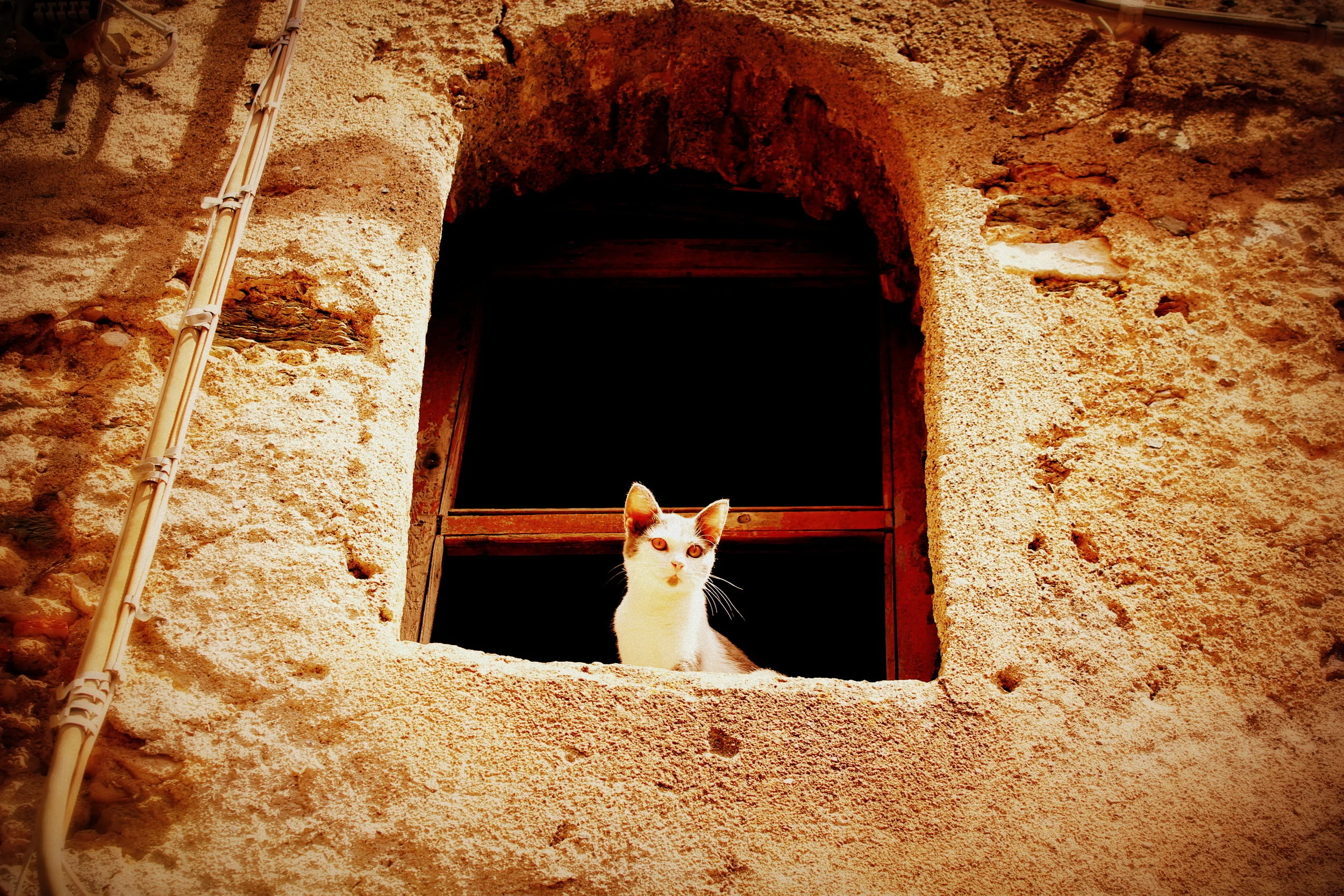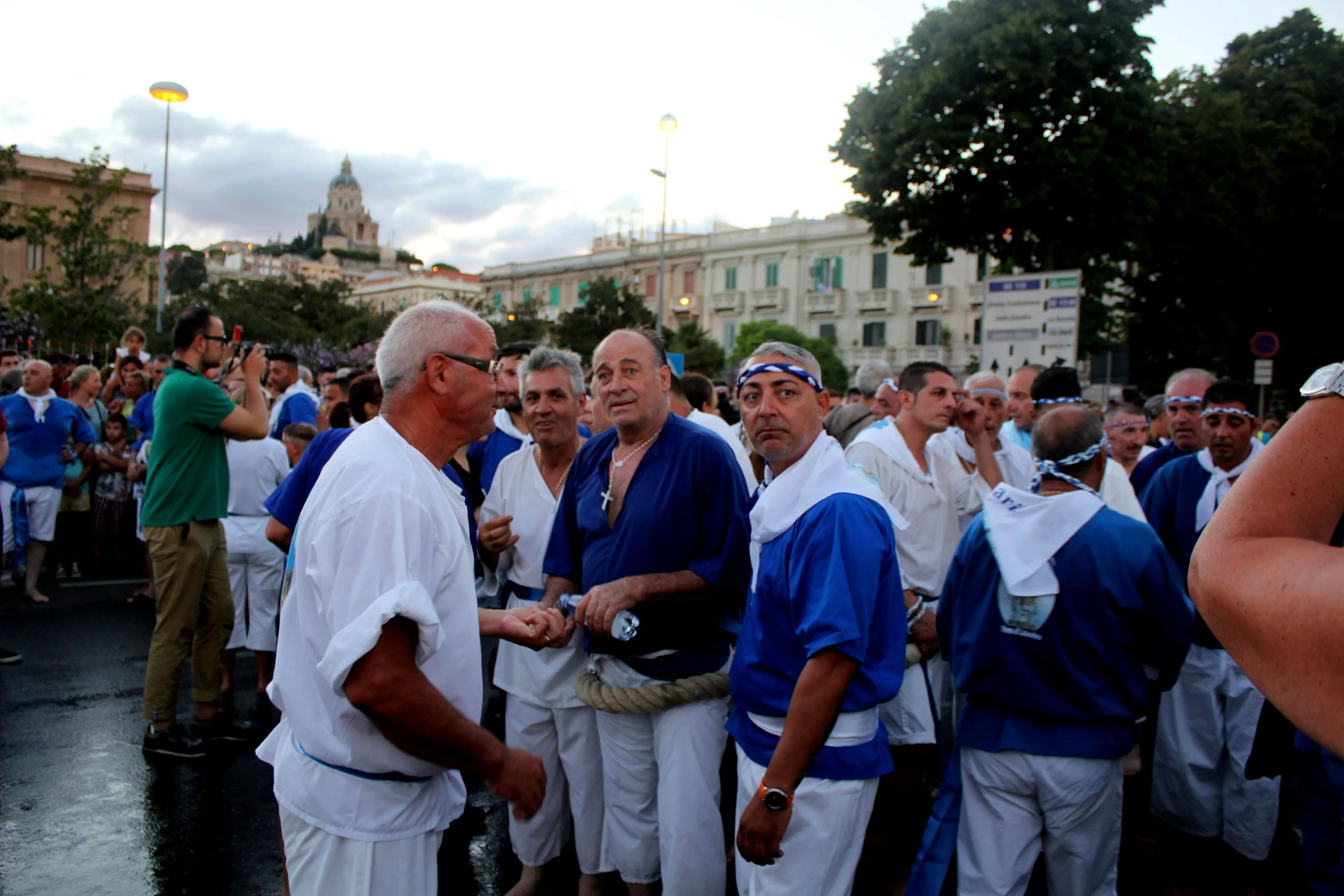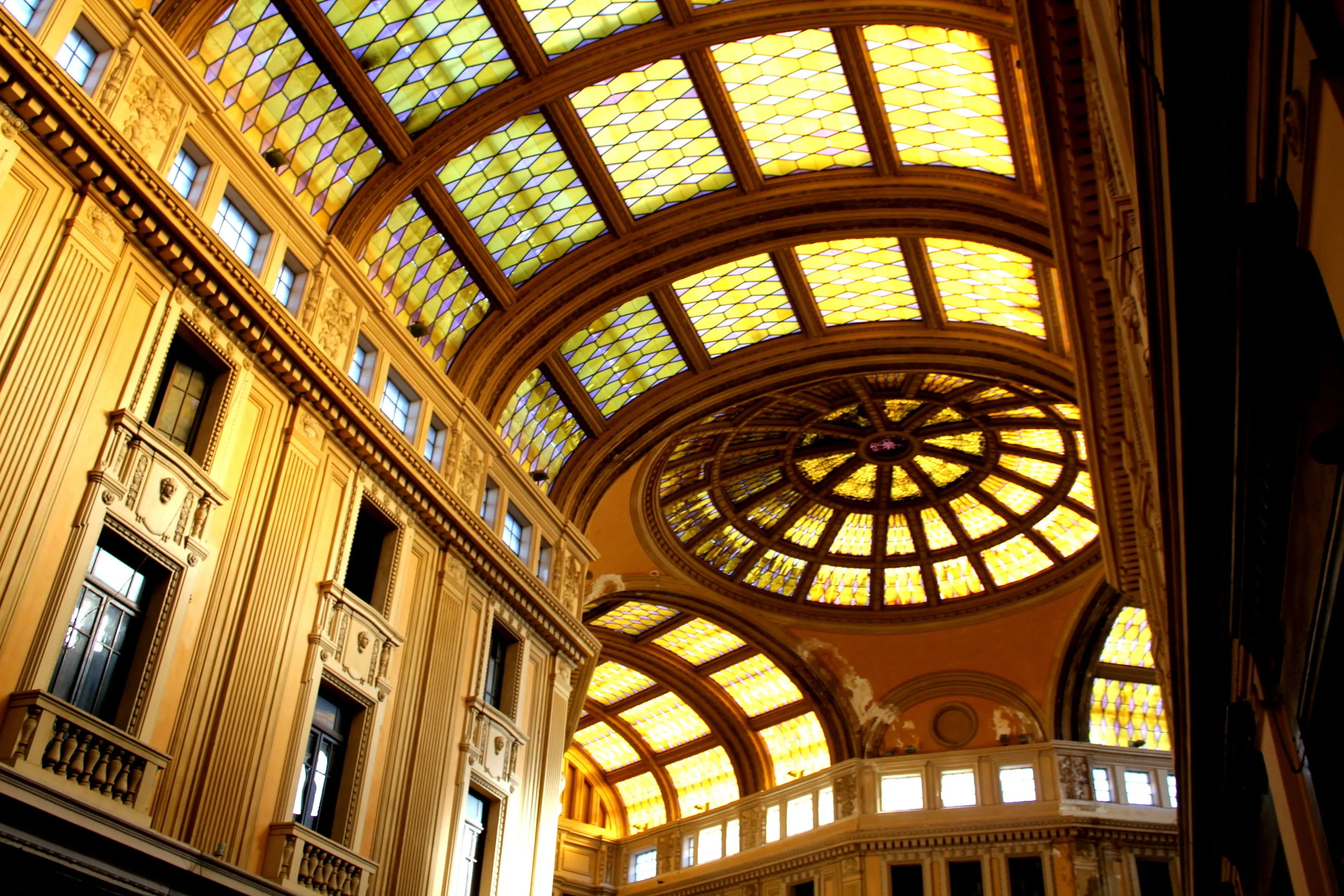
Our location
La nostra sede
The Villages of the Strait
The area south of the city of Messina along the Strait is one of the most highly populated regions of Southern Italy. Nestled between the mountains and the sea, these villages of the Southern Messina region, though small in population, have much to offer in terms of beauty and culture.
Although they are less frequented by tourists seeking more recognizable cities and landmarks, the smaller villages of Sicily offer a unique and festive look into everyday life in the agricultural South.
The Calonerò Region
Our work in particular focuses on a series of villages along the Ionian Coast known as Calonerò, from the Greek word meaning "good water." These small villages, spread throughout three mountainous valleys, are interconnected, but each maintains their own unique culture with different feast day celebrations honoring local saints, different dialects, and culinary specialities, which are celebrated as sacred foods in a festival known as a sagra.
Village life is often centered around the family, with religious events as communal celebration. Often towns are built around piazzas, which more often than not are also the home of the town's main church, which is usually named after the local patron saint.
The Fall and Rise of Small Villages
In recent years, these smaller villages and towns have experienced an exodus of people seeking greater opportunities in the cities, but until 18th century, Sicilian history was nearly entirely made up of small town life in the feudal system.
Although today large cities such as Messina and Palermo take the spotlight, most of the people who live in these larger cities today were living in the smaller towns and villages until the last century or two. These smaller rural villages are the true heart and soul of Sicilian culture and history.
Pezzolo: Our Creative Refuge
Our primary residence is in the village of Pezzolo, sometimes called a “village built on a rock.” Located just 12 miles south of Messina, this small village is primarily accessible by one 7km long stretch of road and sits 400m above sea level.
The origins of the village are ancient, but we know that the location was already inhabited and became further developed during the time of the Arab Caliphate of Sicily, in the 9th and 10th centuries. The nearby Benedictine Monastery of San Placido Calonerò is recorded as already existing in 1086.
Today, Pezzolo is inhabited by fewer than 300 residents as the entire South of Italy faces high emigration rates—it is estimated that some 20,000 young Sicilians leave the island each year for better opportunities elsewhere, due to the struggling Sicilian agricultural economy and the high unemployment rates.
Messina: The City that Survives
Messina has also suffered due to the preponderance of natural disaster, primarily due to its close proximity to the active volcano, Mount Etna, and location on the boundary zone of the African continental plate.
Earthquakes leveled the historic city in 1783, 1894, and most famously in 1908, when on December 28th, a 7.1 magnitude earthquake and three 39-foot tsunami waves left Messina nearly completely leveled. Although the earthquake lasted only 30 to 40 seconds, up to 200,000 people were killed (about half of the city’s population) and over 91% of the city structures were destroyed or irreparably damaged.
The destruction spanned approximately 186 miles. Further destruction took place during Allied forces bombardments in the Second World War. For this reason, Messina is sometimes called, “A city with no memory.”
The 2009 Mudslides and Reconstruction
More recently, in 2009, a historic storm and subsequent mudslide caused significant damage to the cities along the Ionian coast of Sicily, with a reported 31 people killed and more than 400 left homeless. Though initial responses to the disaster were slow, the villages of this Southern Messina Calonerò have begun to rebuild and regrow.
In the years following the mudslide, several villages have put forward renewed interest in projects to revitalize life in Sicilian small towns.
The Crossroads of History and Culture
Despite suffering extraordinary hardship, Messina and its surrounding province is also home to an extensive and rich culture as one of the oldest surviving port cities in the world, with "survivor" as the most apt term for this hardy city and its people.
Historically, Messina is still rich in significance. Homer's clever Odysseus lost much of his crew to the Strait of Messina's monster, Scylla, and her counterpoint Charybdis on the Calabria side. It is sometimes thought to be the the Avalon of Arthurian legend. It is the city in which William Shakespeare set Much Ado About Nothing, as well as the home of the University of Messina, the first Jesuit university founded by Saint Ignatius Loyola himself.
The Norman style Cathedral of Messina remains an important historic site, and is home to one of the largest astronomical clocks in the world, as well what was at the time of construction in 1933 the largest automaton clock in the world, built by Ungerer Brothers of Strasbourg. To this day, tourists gather in the Cathedral plaza everyday at noon to watch the clock give its 15 minute performance.
Life in the rural villages of Southern Messina offers sweeping panoramas, fresh mountain air, the sea breeze off the Strait of Messina, and a peace that brings joy to the heart of an artist.
I Borghi dello Stretto
La zona a sud della città di Messina, lungo lo Stretto, è una delle regioni più densamente popolate del Sud Italia. Incastonati tra le montagne e il mare, questi borghi della zona meridionale di Messina, seppur piccoli per popolazione, offrono una ricchezza straordinaria in termini di bellezza e cultura.
Anche se meno frequentati dai turisti in cerca di città e monumenti più noti, i piccoli borghi della Sicilia offrono uno sguardo unico e festoso sulla vita quotidiana del Sud agricolo.
La Regione di Calonerò
Il nostro lavoro si concentra in particolare su una serie di borghi lungo la costa ionica conosciuti come Calonerò, dal greco “buona acqua.” Questi piccoli centri, distribuiti in tre valli montane, sono interconnessi ma ciascuno conserva una propria identità culturale, con celebrazioni religiose dedicate ai santi patroni, dialetti locali e specialità culinarie che vengono celebrate come cibi sacri durante le sagre.
La vita nei borghi ruota spesso attorno alla famiglia, con eventi religiosi come comunioni e battesimi che diventano occasioni di festa collettiva. Le piazze, spesso cuore del paese, ospitano anche la chiesa principale, solitamente dedicata al santo patrono.
Declino e Rinascita dei Piccoli Borghi
Negli ultimi anni, molti di questi borghi hanno vissuto un esodo verso le città in cerca di maggiori opportunità. Tuttavia, fino al XVIII secolo, la storia siciliana era quasi interamente fatta di vita nei piccoli centri sotto il sistema feudale.
Oggi città come Messina e Palermo dominano la scena, ma la maggior parte degli abitanti di queste metropoli ha origini nei piccoli borghi. Questi villaggi rurali rappresentano il vero cuore pulsante della cultura e della storia siciliana.
Pezzolo: Il Nostro Rifugio Creativo
La nostra sede principale si trova a Pezzolo, spesso chiamato “il paese costruito sulla roccia.” Situato a soli 20 km a sud di Messina, il villaggio è accessibile principalmente da una strada lunga 7 km e si trova a 400 metri sul livello del mare.
Le origini di Pezzolo sono antiche, ma sappiamo che era già abitato e si sviluppò ulteriormente durante il periodo del Califfato arabo di Sicilia, tra il IX e il X secolo. Il vicino Monastero Benedettino di San Placido Calonerò è documentato già nel 1086.
Oggi, Pezzolo conta meno di 400 abitanti, in un contesto in cui il Sud Italia affronta alti tassi di emigrazione: si stima che ogni anno circa 20.000 giovani siciliani lascino l’isola in cerca di migliori opportunità, a causa della crisi agricola e della disoccupazione.
Messina: Una Città Sopravvissuta
Messina ha sofferto molto a causa delle catastrofi naturali, dovute alla vicinanza con il vulcano attivo Etna e alla sua posizione sulla faglia della placca africana.
Terremoti devastarono la città nel 1783, 1894 e, in modo più tragico, nel 1908, quando un sisma di magnitudo 7.1 e tre onde di tsunami alte 12 metri distrussero quasi completamente la città. In soli 30-40 secondi, morirono fino a 200.000 persone e oltre il 91% degli edifici fu distrutto o gravemente danneggiato.
Ulteriori distruzioni avvennero durante i bombardamenti della Seconda Guerra Mondiale. Per questo, Messina è talvolta chiamata “la città senza memoria.”
La Frana del 2009 e la Ricostruzione
Più recentemente, nel 2009, una tempesta storica e una successiva frana causarono gravi danni lungo la costa ionica, con 31 morti e oltre 400 sfollati. Sebbene la risposta iniziale fu lenta, i borghi della zona di Calonerò hanno iniziato un percorso di ricostruzione e rinascita.
Negli anni successivi, diversi paesi hanno mostrato un rinnovato interesse per progetti di rivitalizzazione della vita nei piccoli centri siciliani.
The Crossroads of History and Culture
Nonostante le difficoltà, Messina e la sua provincia sono custodi di una cultura ricchissima. È una delle città portuali più antiche del mondo ancora in attività, e il termine “sopravvissuta” descrive perfettamente la sua essenza.
Secondo la mitologia, Ulisse perse gran parte del suo equipaggio tra Scilla e Cariddi, proprio nello Stretto di Messina. Alcuni credono che Messina sia l’Avalon delle leggende arturiane. Shakespeare vi ambientò Molto rumore per nulla, e la città ospita l’Università di Messina, la prima università gesuita fondata da Sant’Ignazio di Loyola.
Il Duomo di Messina, in stile normanno, ospita uno dei più grandi orologi astronomici del mondo e, al momento della sua costruzione nel 1933, il più grande orologio meccanico automatizzato, realizzato dai fratelli Ungerer di Strasburgo. Ogni giorno a mezzogiorno, i turisti si radunano nella piazza per assistere al suo spettacolo di 15 minuti.
La vita nei borghi rurali del Sud di Messina offre panorami mozzafiato, aria di montagna, la brezza marina dello Stretto e una pace che riempie il cuore di un artista.



